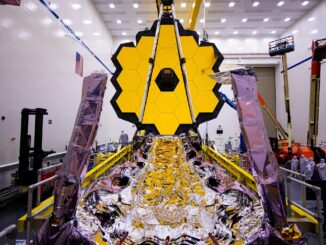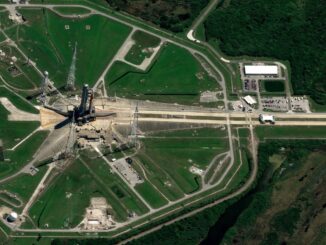
Our solar neighbour is a popular subject of science-fiction. Martians have been the topic of countless stories over the last century.
The prospect of humanity exploring and prospering beyond the thinly veiled blue planet is our ultimate goal.
After all, we only stepped outside the caves to see what was there.
Following years of planning, the next rover is finally en route to the Red Planet.
30th July 2020 saw the launch of the most advanced, compact, robotic biochemist ever built: The Perseverance Rover, and flying crew mate – Ingenuity. The launch vehicle selected for this historic event was the Atlas V-541, standing 58m tall with payload in place.

Since 1960, over fifty missions have been dispatched to Mars, with varying levels of success.
The first to successfully perform was Nasa’s Mariner 4: a flyby reconnaissance mission in 1965. Mariner 6 & 7 followed in 1969. Eight missions from both the USA and the Soviet Union failed between these successes.
As knowledge and technology evolved the success rate began to improve.
Out of the following 17 missions, 8 were successful, with a further 2 providing at least some valuable data before being considered a partial failure. This was before the end of 1975.
There are currently 6 operational orbiter vehicles circling Mars.
NASA’s Odyssey has been functioning since 2001 and expected to remain in service until 2025.
ESA’s Mars Express is 2 years younger. Other vehicles include those from ESA, India’s ISRO and ROSCOSMOS. The United Arab Emirates has joined the exploration party by launching an orbiter on 19th July 2020.
This is one five vehicles currently heading to Mars, set to carry out instructions on behalf of three different Global space agencies.
The first lander to really grab public attention was “Opportunity” in January 2004. Roaming the dusty terrain for 14 years it surveyed an area of over 45km. The mission officially ended following arid storms which eventually prevented the solar panels from performing, ceasing communication in 2019.
“Curiosity” landed in August 2012. Tasked with gathering information on geology and climate, it was intended to last for just two years. However, this exploratory machine has proven so successful it is still in operation at the time of publishing this article.
Curiosity’s newest cousin was launched from Kennedy Space Centre, Florida: embarking on a seven-month journey to Mars’ Jezero Crater.
The landing site was chosen after a five-year selection process. This location was determined to have the best opportunity of revealing signs of previous microbial life.

Evidence suggests that at several periods in the planet’s history, there was water at the site. The crater is believed to have held a lake fed by several rivers over 3.5million years ago. This would have provided the conditions required for life to evolve.
“Perseverance“ is roughly the size of a family car.
This compact mobile laboratory will drill, digest and catalogue composition of the surface material it encounters. Hollow drills will delve beneath the terrain to gather samples. These will be analysed, numbered, sealed and placed back on the surface. The precise location of these caches will be transmitted back to Earth. Future missions will eventually recover them for further analysis as technology develops.
This rover is also the first to include microphones which will monitor and transmit ambient noise and is equipped with 23 cameras for various types of observations.
The focus of the mission is to search for evidence of prehistoric microbial life, whilst also building a better understanding of the climate and terrain. All of these investigations will provide us with a better understanding of the history of the planet, and create a better understanding of what we can expect when we land our first explorers on the surface.
NASA has set four “Science Goals” for this mission –
Goal 1 Determine if life ever arose on Mars.
The samples that will be tested on board are looking for preserved examples of microbial life forms that may have evolved during the period that the landing site held water.
Goal 2 Characterise Martian climate.
Create a more detailed picture of the environmental challenges to overcome in order to successfully build a base for human habitation.
Goal 3 Characterise Martian geology.
What is the surface subsrate made of? How did it develop over the planet’s history?
Goal 4 Prepare for future human exploration & eventual habitation of Mars.
By gathering all of this information, we can build a better picture and ensure safe preparation for the next stage of our exploration.

Equipment
To achieve these goals, Perseverance rover carries seven primary instrument arrays.
MASTCAM-Z Ultra high-tech camera system with both panoramic and stereoscopic capabilities. Mounted at 2m above ground, this is the tallest part of the rover and provides analytical and guidance functions. The cameras are positioned 24.2cm apart to create 3D imaging or the area. This is also the most recognisable part of the craft.
MEDA Sensors recording ambient temperature, wind speed and direction, relative humidity, as well as dust particle shape and size. Relative humidity will be measured and weather trends predicted. This is vital in ensuring the safety of future explorers on the surface.
MOXIE Testing the capability of new technology to create oxygen from atmospheric CO2 which accounts for 96% of the atmosphere on Mars (compared to 21% on Earth). As an experimental generator of breathable air this will prove vital in creating long term human habitation. It does this by ingesting atmospheric CO2 and expelling Oxigen, just as plants do. This will also reduce the cost of creating fuel and air by providing at least 75% of the oxygen required.
PIXL Chemical analysis of elemental composition of environment. Changes in signatures made by microbes can be detected in samples as small as a grain of salt. It is searching for 20 chemical signatures which could be left by biological compounds in the tiniest amounts (as low as just a few parts per million) and record the exact location of these signatures.
RIMFAX Mounted on the lower rear section of the chassis. Ground penetrating radar provides fine details of subsurface structure. Able to view structures 10m+ beneath the surface.
SHERLOC Ultra-violet laser spectrometer to detect presence of organic compounds. It will also carry samples of the materials intended for use in future suit design. This will help us understand how they will cope with the conditions of the Martian environment. Named after the fictional detective, Sherlock Holmes, it is guided by camera sidekick, Watson.
SUPERCAM Able to detect organic compounds in rocks from a distance. It uses lasers to study the tiniest samples that may not be reached by other on board equipment. Provides back-up for other systems on board.
Perseverance’s teammate, “Ingenuity” is the first helicopter designed for use on another world. This is solar-powered craft has a top speed of up to 35km/hr. It is intended to perform up to five flights over 30 days, each assignment lasting up to five minutes. This will test scouting capabilities for future missions, whilst provide route planning strategies for its rover partner.
The 14cm cube chassis is lifted by two pairs of carbon-fibre rotor blades with a disc diameter of 120cm. These create the lift required in the thin Martian atmosphere – only 99% density of that on Earth. They are centrally mounted, rotating in opposite directions at 2,400 rpm (much faster than required on Earth) ensuring a stabilising tail rotor is not required.
With a mass of just 1.8kg, Ingenuity has no scientific equipment on board and is, technically, a separate experiment to the Perseverance mission.
There is a wave of public excitement surrounding this mission, caused by a simple yet technologically genius media campaign. Following the success of a campaign trialled with Curiosity, “Send Your Name to Mars” created a list of 1.2 million names.
These have been engraved onto two coin-sized silicone chips, mounted on the body of the rover. Those who contributed were rewarded with souvenir boarding passes to show their participation in the launch. These next few months will be an intriguing time, as we can only imagine the wonders that will be uncovered once these machines land in February 2021.




